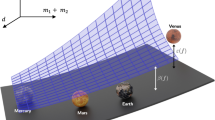Abstract
We believe that AI programs written for discovery tasks will need to simultaneously employ a variety of reasoning techniques such as induction, abduction, deduction, calculation and invention. We describe the HR system which performs a novel ILP routine called automated theory formation. This combines inductive and deductive reasoning to form clausal theories consisting of classification rules and association rules. HR generates definitions using a set of production rules, interprets the definitions as classification rules, then uses the success sets of the definitions to induce hypotheses from which it extracts association rules. It uses third party theorem provers and model generators to check whether the association rules are entailed by a set of user supplied axioms. HR has been applied to a range of predictive, descriptive and subgroup discovery tasks in domains of pure mathematics. We describe these applications and how they have led to some interesting mathematical discoveries. Our main aim here is to provide a thorough overview of automated theory formation. A secondary aim is to promote mathematics as a worthy domain for ILP applications, and we provide pointers to mathematical datasets.
Preview
Unable to display preview. Download preview PDF.
Similar content being viewed by others
References
Colton, S.: An application-based comparison of Automated Theory Formation and Inductive Logic Programming. Linkoping Electronic Articles in Computer and Information Science (special issue: Proceedings of Machine Intelligence 17) (2000)
Colton, S.: Refactorable numbers - A machine invention. Journal of Integer Sequences 2 (1999)
Colton, S.: Automated theory formation applied to mutagenesis data. In: Proceedings of the 1st British-Cuban Workshop on Bioinformatics (2002)
Colton, S.: Automated Theory Formation in Pure Mathematics. Springer, Heidelberg (2002)
Colton, S.: The HR program for theorem generation. In: Proceedings of the Eighteenth Conference on Automated Deduction (2002)
Colton, S.: Making conjectures about Maple functions. In: Calmet, J., Benhamou, B., Caprotti, O., Hénocque, L., Sorge, V. (eds.) AISC 2002 and Calculemus 2002. LNCS (LNAI), vol. 2385, p. 259. Springer, Heidelberg (2002)
Colton, S., Bundy, A., Walsh, T.: Automatic identification of mathematical concepts. In: Proceedings of the 17th ICML (2000)
Colton, S., Bundy, A., Walsh, T.: On the notion of interestingness in automated mathematical discovery. IJHCS 53(3), 351–375 (2000)
Colton, S., Miguel, I.: Constraint generation via automated theory formation. In: Walsh, T. (ed.) CP 2001. LNCS, vol. 2239, p. 575. Springer, Heidelberg (2001)
Colton, S., Pease, A.: Lakatos-style methods in automated reasoning. In: Proceedings of the IJCAI 2003 workshop on Agents and Reasoning (2003)
The Gene Ontology Consortium. Gene ontology: tool for the unification of biology. Nat. Genet. 25, 25–29 (2000)
De Raedt, L., Dehaspe, L.: Clausal discovery. Machine Learning 26, 99–146 (1997)
Dehaspe, L., Toivonen, H.: Discovery of frequent datalog patterns. Data Mining and Knowledge Discovery 3(1), 7–36 (1999)
Fajtlowicz, S.: Conjectures of Graffiti. Discrete Mathematics 72(23), 113–118 (1988)
Franke, A., Kohlhase, M.: System description: MathWeb. In: Ganzinger, H. (ed.) CADE 1999. LNCS (LNAI), vol. 1632, pp. 217–221. Springer, Heidelberg (1999)
Lakatos, I.: Proofs and Refutations. Cambridge University Press, Cambridge (1976)
McCune, W.: OTTER user’s guide. ANL/90/9, Argonne Labs (1990)
McCune, W.: Mace 2 Reference Manual. ANL/MCS-TM-249, Argonne Labs (2001)
Meier, A., Sorge, V., Colton, S.: Employing theory formation to guide proof planning. In: Calmet, J., Benhamou, B., Caprotti, O., Hénocque, L., Sorge, V. (eds.) AISC 2002 and Calculemus 2002. LNCS (LNAI), vol. 2385, p. 275. Springer, Heidelberg (2002)
Minsky, M.: A framework for representing knowledge. In: Brachman, Levesque (eds.) Readings in Knowledge Representation, Morgan Kaufmann, San Francisco (1985)
Muggleton, S.: Inverse entailment and Progol. New Generation Computing 13, 245–286 (1995)
Srinivasan, A., Muggleton, S., King, R., Sternberg, M.: Theories for mutagenicity: A study of first-order and feature based induction. Artificial Intelligence 85(1,2), 277–299 (1996)
Steel, G.: Cross domain concept formation using HR. Master’s thesis, Division of Informatics, University of Edinburgh (1999)
Sutcliffe, G., Suttner, C.: The TPTP Problem Library: CNF Release v1.2.1. Journal of Automated Reasoning 21(2), 177–203 (1998)
Zimmer, J., Franke, A., Colton, S., Sutcliffe, G.: Integrating HR and tptp2x into MathWeb to compare automated theorem provers. In: Proceedings of the CADE 2002 Workshop on Problems and Problem sets (2002)
Author information
Authors and Affiliations
Editor information
Editors and Affiliations
Rights and permissions
Copyright information
© 2003 Springer-Verlag Berlin Heidelberg
About this paper
Cite this paper
Colton, S., Muggleton, S. (2003). ILP for Mathematical Discovery. In: Horváth, T., Yamamoto, A. (eds) Inductive Logic Programming. ILP 2003. Lecture Notes in Computer Science(), vol 2835. Springer, Berlin, Heidelberg. https://doi.org/10.1007/978-3-540-39917-9_8
Download citation
DOI: https://doi.org/10.1007/978-3-540-39917-9_8
Publisher Name: Springer, Berlin, Heidelberg
Print ISBN: 978-3-540-20144-1
Online ISBN: 978-3-540-39917-9
eBook Packages: Springer Book Archive




